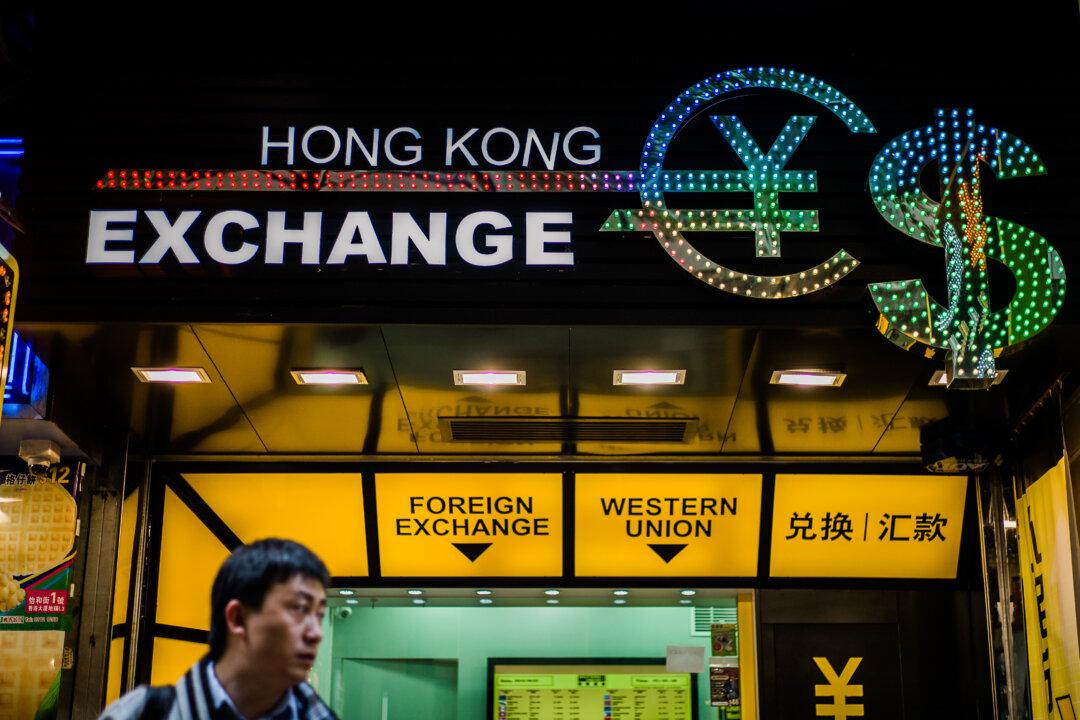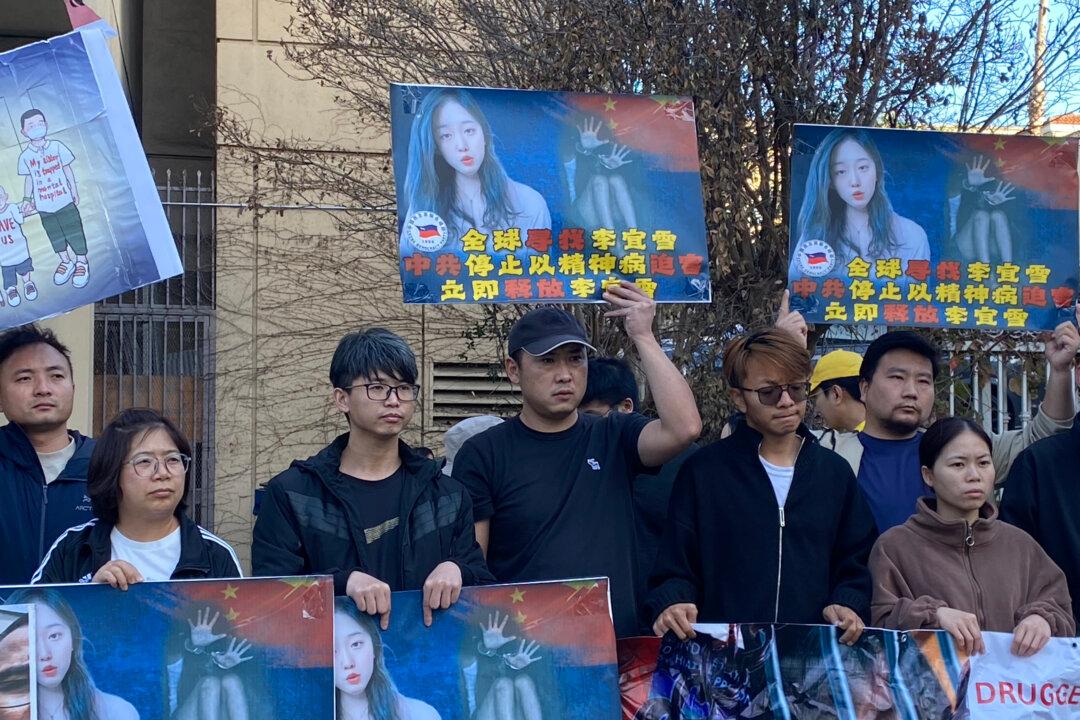Taiwan’s exports to China are steadily decreasing as Taiwanese capital and businesses gradually move away from China. In contrast, Taiwan’s exports to the United States have risen significantly, according to statistics from Taiwan’s government.
On May 8, Taiwan’s Ministry of Finance (MOF) announced preliminary customs export statistics for April. For the first time, monthly exports to the United States surpassed the $10 billion mark, reaching $10.16 billion, an increase of 81.6 percent year-on-year. Taiwan’s trade surplus with the United States amounted to $6.38 billion, setting new records in all three categories for a single month.
Tsai Mei-na, director of the MOF statistics department, stated that “information, communication, audiovisual products,” and “electronic components” are the two main drivers of Taiwan’s exports to the United States. These sectors have benefited from the rising opportunities in artificial intelligence (AI) applications and the U.S. government’s recent efforts to bring advanced chip manufacturing and production back to the United States.
In contrast, Taiwan’s exports to China and Hong Kong in April amounted to $11.3 billion, an 11.3 percent year-on-year decrease. Ms. Tsai attributed this decline to several factors: the slow pace of China’s domestic demand recovery, the global supply chain reorganization that led some manufacturers to move production out of China, and the chain reaction from U.S.-imposed bans that reduced China’s demand for Taiwanese electronic components.
Taiwan’s export landscape has shifted significantly in the first four months of this year. Exports to China and Hong Kong accounted for only 30.7 percent of total exports, the lowest in 22 years for the same period. Meanwhile, exports to the United States rose to 23.5 percent of total exports, the highest in 24 years for the same period. Exports to the Association of Southeast Asian Nations (ASEAN), covering ten countries, accounted for 19.5 percent, also a record high for the same period.
This trend of shifting exports has been evident in recent years.
Over the past decade, China has been Taiwan’s largest export destination. Before 2021, Taiwan’s exports to China consistently accounted for around 40 percent, peaking at 43.9 percent in 2020. However, this figure dropped to 38.8 percent in 2022 and further to 35.2 percent in 2023.
Since the United States-China trade war began in 2018, Taiwan’s export share to the United States has been increasing annually, rising from 11.8 percent in 2018 to 17.6 percent in 2023. Last year, for the first time, the share of exports to the United States matched that of ASEAN, making the United States Taiwan’s second-largest export market.
In the first quarter of this year, the United States temporarily surpassed China as Taiwan’s largest export destination. Taiwan’s exports to the United States amounted to $26.6 billion in the first quarter, while exports to China were only $22.407 billion.
Taiwanese Companies, Investors Move Away From China
Since the 1990s, a significant number of Taiwanese enterprises have moved to China in what is known as the “westward movement.” In 2020, among the top 100 exporters in China, 31 were Taiwanese companies, and among the top 10 exporters, 6 were Taiwanese companies.However, amid China’s severe economic downturn and increasingly tense geopolitical situation, Taiwanese companies are making new choices.
The MAC stated that, in response to geopolitical turmoil and the escalating U.S.-China trade and tech wars, Taiwanese businesses have adjusted their global strategies to align with the reorganization of the international supply chain. They have reduced investments in China and increased investments in the United States, Europe, Japan, and New Southbound Policy countries to diversify production risks.
On April 26, major Taiwanese semiconductor packaging and testing company KYEC announced that it would sell 92 percent of its shares in its Chinese subsidiary, King Long Technology in Suzhou, to a Chinese partner, effectively exiting the Chinese semiconductor packaging and testing market.
KYEC explained that geopolitical factors and U.S. restrictions on China’s semiconductor industry, such as technology bans and trade entity lists, have altered the global semiconductor supply chain. This has changed the ecological environment for semiconductor manufacturing in China, resulting in increasingly fierce market competition.
After thoroughly considering the operating environment of King Long Technology and evaluating KYEC’s future growth strategy and long-term financial resource allocation, the board decided to withdraw from the Chinese semiconductor manufacturing business.
KYEC also stated that it would concentrate its resources on Taiwan’s semiconductor supply chain, aiming to create higher growth in revenue and profits. Following the announcement of its exit from China, KYEC’s stock price surged on the next trading day.
Previously, other Taiwanese contract manufacturers such as Quanta, Foxconn, Pegatron, and Wistron shifted their investments to Vietnam.

Taiwan Shuts Down China’s Access to Core Technologies
Taiwan’s decreasing dependence on China also means a weakening influence of the Chinese Communist Party (CCP) over Taiwan. However, the CCP’s demand for Taiwan’s resources, especially in high-tech sectors, remains strong.Approximately 90 percent of the world’s advanced semiconductor chips are manufactured in Taiwan.
Taiwan also dominates the global market for AI servers.
In March, Taiwan’s Ministry of Economic Affairs held a meeting in Taoyuan City with 20 leaders from the information and communication technology (ICT) industry. The ministry stated that Taiwan produces over 80 percent of the world’s servers, and for AI servers, this proportion rises to 90 percent. Meanwhile, U.S.-brand AI servers are 100 percent reliant on Taiwanese suppliers.
The core of U.S.-China technological competition currently involves three major areas: semiconductors and microelectronics, quantum information technologies, and artificial intelligence. As the United States and China drift further apart, Taiwan appears to have chosen its side.
In December last year, Taiwan’s authorities announced a national core “key technologies” list. The list covers five major fields: national defense, aerospace, agriculture, semiconductors, and ICT (information and communications technology).
In the semiconductor sector, this includes technologies related to the manufacturing of integrated circuits (ICs) with processes below 14 nanometers, as well as heterogeneous integration packaging technologies such as wafer-level packaging, silicon photonics integration packaging, and the necessary special materials and equipment technologies.
In May of last year, Taiwan’s Legislative Yuan passed amendments to parts of the ‘National Security Act.’ These amendments stipulate that anyone who steals national core key technologies for foreign countries, Hong Kong, Macau, or hostile foreign forces can be sentenced to up to 12 years in prison, with fines doubled based on the illegal gains. Personnel involved in key technologies receiving government funding must apply for permission before traveling to China.








